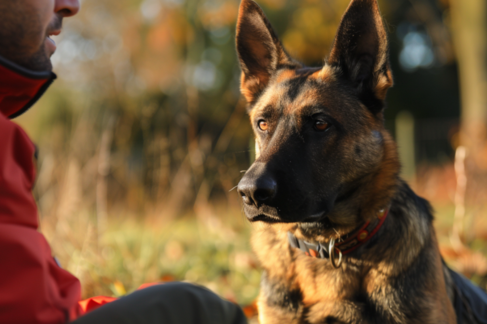Private dog training offers a tailored approach to address a variety of behavioural issues that dogs may exhibit. From jumping on guests to excessive barking, these behaviours can be frustrating for dog owners and potentially disruptive to daily life.
However, with the right techniques and guidance from a professional trainer, many common behavioural issues can be effectively managed and corrected. In this article, we’ll explore some of the most prevalent behavioural issues encountered in private lessons for dogs and discuss strategies for addressing them.
Understanding Common Behavioural Issues
Before delving into specific training techniques, it’s important to understand the underlying reasons behind common behavioural issues in dogs.
Jumping: Jumping on people, whether out of excitement or to seek attention, is a behaviour often seen in dogs. While it may seem harmless, it can be problematic, especially when dealing with larger breeds or guests who are uncomfortable with dogs.
Excessive Barking: Barking is a natural form of communication for dogs, but excessive barking can become a nuisance and disrupt the peace in a household. Dogs may bark excessively due to boredom, fear, territoriality, or separation anxiety.
Leash Pulling: Many dogs exhibit excessive pulling on the leash during walks, making walks unpleasant for both the dog and the owner. This behaviour can stem from excitement, a lack of leash manners, or a desire to explore their surroundings freely.
Destructive Chewing: Chewing is a normal behaviour for dogs, but when it becomes destructive, such as chewing on furniture or personal belongings, it can be frustrating for owners. Destructive chewing often occurs due to boredom, anxiety, or teething.
Addressing Behavioural Issues through Private Training
Private dog training offers a personalized approach to address behavioural issues tailored to the specific needs of the dog and its owner. Here are some effective strategies commonly employed by private trainers:
Positive Reinforcement: Positive reinforcement techniques focus on rewarding desired behaviours with treats, praise, or toys. When a dog receives positive reinforcement for exhibiting the desired behaviour, they are more likely to repeat it. For example, when teaching a dog not to jump, the trainer may reward the dog for keeping all four paws on the ground when greeting guests.
Desensitization and Counterconditioning: Desensitization involves gradually exposing the dog to the trigger that causes the undesirable behaviour in a controlled environment. For instance, if a dog barks excessively at strangers, the trainer may gradually expose the dog to strangers from a distance while rewarding calm behaviour. Counterconditioning involves changing the dog’s emotional response to the trigger by associating it with something positive, such as treats or playtime.
Management Techniques: Management techniques involve modifying the dog’s environment to prevent the occurrence of undesirable behaviours. For example, to prevent destructive chewing, the trainer may provide the dog with appropriate chew toys and ensure that valuable items are out of reach.
Consistency and Patience: Consistency is key in addressing behavioural issues in dogs. Owners must be consistent in applying training techniques and rules to reinforce desired behaviours effectively. Additionally, patience is essential as behaviour modification takes time and may require repeated training sessions.
Individualized Training Plans: Private trainers assess each dog’s unique personality, history, and behavioural issues to create individualized training plans that address specific needs. This personalized approach ensures that the training is tailored to the dog’s temperament and learning style, maximizing the likelihood of success.
Conclusion
Private dog training offers an effective solution for addressing common behavioural issues such as jumping, excessive barking, leash pulling, and destructive chewing. By understanding the underlying reasons behind these behaviours and employing positive reinforcement techniques, desensitization, and counterconditioning, private trainers can help owners effectively manage and correct their dogs’ behaviour.
Consistency, patience, and individualized training plans are essential components of successful private dog training, enabling owners to build a strong bond with their canine companions while promoting desirable behaviours.If you are looking for the best online dog training courses, you can rely on K9 Academy.



